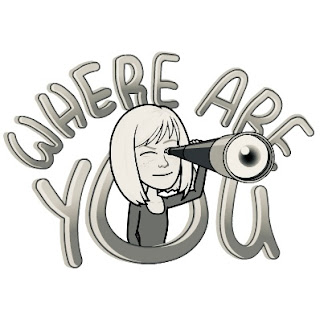Disability Awareness and Disability Equality training are often used interchangeably these days. However, it's helpful to understand why equality and awareness carried different meanings for disability activists a few decades ago. In the 1990s, disability awareness training was largely impairment-specific, delivered by experts in different impairments, and often employed by large charities. These charities had access to money but also had significant power and influence at local, institutional and governmental levels. This inequality of power and voice still persists today - a cultural silencing. You'll notice that far greater 'ink' is given to big charities than to grassroots organisations - in the press, television or radio, for example.
As I discovered many years after delivering disability awareness training myself, equality programmes were created more intentionally as a response to the power held by ‘expert’ professionals. Equality training emerged in opposition to the cultural silencing imposed on the disabled population. Disability equality, often based on Disability Studies, emphasises the group voice of those silenced by ableism, and focuses on the shared interests of d/Disabled campaigners and d/Deaf and Disabled People's Organisations. This helped secure greater accountability in a storytelling that articulates civil rights aspect of inequality - the Disabled People's Movement's fight against institutionalisation (Morris, 1995). Disability Equality focuses on the institutional and structural inequality that drives discrimination, disadvantage and hate crime, because it allows an exploration of structural power and privilege. (Able Privilege, here, is defined as not facing the prejudice and discrimination of ablism) Rather than highlighting individual differences, it addresses the characteristics of disabled people’s oppression, that affects 3 in 10 people, while respecting individual experience, choice and identify.
When I was introduced to Disability Equality, and the Social Model more specifically, it changed my perspective on my own personal experience - as a result my language over time. It changed the way I articulated the subject, I dropped private feelings and personal preferences, in public conversations and in written work. I began to tell a story that told of theoretical ideas and framed experience within the context of the d/Deaf and Disabled People's Movement. I purposely aimed to reflect shared knowledge, experience and wisdom. While far from academic in those days, I was keen to be part of a conversation that had started because Disabled activists refused to be silent. This meant presenting societal oppression, then disablism now ableism, as akin to sexism, racism, homophobia and religious intolerance. The books came much later, and my library grew slowly, but three decades later, I've joined a few dots between lived experience, academic theory and civic protest. I still speak 'in the streets', to paraphrase hooks, fearing a conversation that was only to be held within the walls of universities.
I use disability 'equality' to place the interests of the disabled population firmly at the centre of organisational accountability, responsible business, and sustainable development. I encourage people to embed an understanding of structural ableism in their organisational storytelling, the way they would sexism, homophobia, classism, ageism and racism. By framing the challenge as dealing with barriers and attitudes in the workplace, not with disabled individuals, the training also provides definitions for inclusive practice, with disabled people facing a problem rather than being a problem. In terms of the Sustainable Development Goals, disability equality training aligns with the social and environmental implications of climate change and global inequality. However, most crucially, the training is led by disabled people, their groups, networks and communities - D/deaf and Disabled People's Organisations, for example. If I seem intransigent, please believe I'm less radical than I was. There's a plentiful blend of excellent training out there, and I applaud those tackling this mountainous issue. This is but my perspective, not a unique truth. (See "Am I Disabled?")
As I stated in my thesis:
The articulation of equality is critical, I think, because in the past, impairment training had largely been delivered by non-disabled professionals, and or those with medical expertise or academics from clinical disciplines (Campbell & Gillespie-Sells, 1991). Formalised in 1985 by the 'Disabled Trainers Forum' (Barnes, 1991, Section 2 – online text has no page), Disability Equality practitioners had personal experience as disabled individuals, giving them proximity to experience but also an understanding of group politics [interest] and theory - the social model of disability as a tool (Oliver, 1990; Beresford, 2003). The distinction of disability equality, therefore, was its perspective - the ideas of the disabled people's movement. It is not an attack on doctors or medicine but the extent of their power in the lives of disabled people. As a shorthand, the Social Model encourages us to avoid the specific characteristics of disability stereotypes – that disabled people are few, faulty and needy – and the assumptions linked to the disempowerment enforced (possibly unwittingly) by medical workers or clinical experts (Morris, 1995; Oliver, 2016). (L. Chapman)

No comments:
Post a Comment